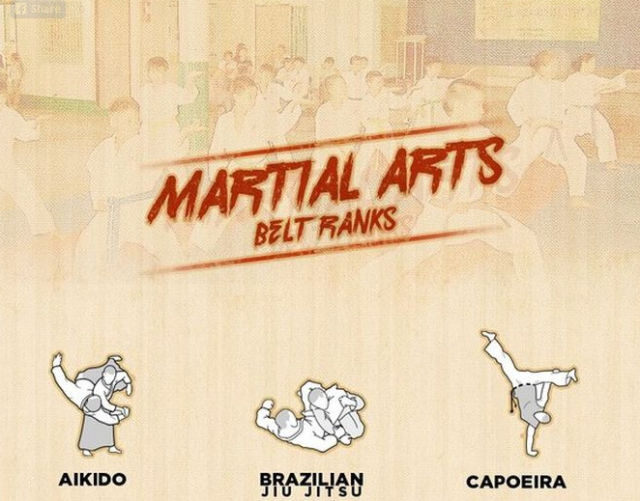Exploring The Rich Heritage And Spiritual Dimensions Of Martial Arts: A Detailed Exam
Exploring The Rich Heritage And Spiritual Dimensions Of Martial Arts: A Detailed Exam
Blog Article
Web Content Writer-Rafferty Barbour
Step into the old world where martial arts were born out of necessity in varied regions. Cultures crafted special battling styles intertwined with historical contexts. Methods evolved over centuries via committed method and social exchanges. Today, modern-day martial arts mix standard elements for maximum effectiveness. Philosophically, martial arts stress self-control, self-improvement, and consistency. Regard, humbleness, and equilibrium are fundamental principles directing professionals in the direction of growth and durability. Discover the depths of this rich background and philosophy to reveal the extensive impacts forming this enduring technique.
Beginnings of Fighting Style
Fighting style originated in different areas around the globe, advancing as practical combat systems to prevent hazards. These old fighting styles were established out of need, with each culture crafting methods matched to their distinct environments and obstacles. From martial arts clubs near me grappling arts of Jujutsu in Japan to the striking methods of Martial art in China, martial arts were deeply intertwined with the historical, social, and cultural fabric of their particular cultures.
In Japan, the samurai class polished martial arts like Kenjutsu, the art of the sword, which later on advanced right into the much more promoted kind of Kendo. At the same time, in Brazil, Capoeira emerged as a blend of dance and fight, developed by enslaved Africans as a method to stand up to injustice. Each fighting style carries with it a rich history and philosophy, showing the worths and ideas of individuals that exercised them.
As you look into the origins of martial arts, you uncover a tapestry of human ingenuity, strength, and the unyielding spirit of warriors throughout time.
Development of Strategies
With centuries of practice and improvement, fight methods within numerous martial arts have actually undertaken an extensive development. From old styles like Kung Fu and Martial arts to more contemporary disciplines such as Brazilian Jiu-Jitsu and Krav Maga, the development of strategies has been driven by a combination of cultural influences, practical applications, and technical developments.
One considerable facet of this advancement is the cross-pollination of techniques between various martial arts. For instance, strategies from conventional Japanese Jiu-Jitsu were incorporated into the creation of Judo by Jigoro Kano in the late 19th century. This mixing of styles has caused the advancement of crossbreed martial arts like Mixed Martial Arts (MIXED MARTIAL ARTS), which combine elements of striking, grappling, and entry techniques.
Additionally, the development of methods has been shaped by the enhancing focus on efficiency and performance in combat. Practitioners have continually sought to improve their methods with strenuous training, trial and error, and competition, causing the development of extremely specialized and effective combating styles. Overall, the advancement of strategies in martial arts reflects the vibrant nature of fight and the ongoing pursuit for improvement and advancement.
Thoughtful Foundations
Checking out the underlying thoughtful concepts of martial arts offers insight into their core values and guiding beliefs. At the heart of numerous martial arts self-controls is the principle of technique itself. By educating your mind and body to work as one natural device, you cultivate self-control that extends beyond the dojo or gym into everyday life. click for more info encompasses regard, humility, and self-constraint, shaping not simply your physical capabilities however also your personality.
One more basic philosophical structure in martial arts is the concept of continual self-improvement. The journey of understanding a martial art is nonstop, with practitioners regularly aiming to much better themselves, both literally and psychologically. This focus on development cultivates durability, determination, and a development attitude that can be applied to all facets of life.
In addition, martial arts emphasize the value of consistency and equilibrium. Techniques are designed to use an opponent's energy against them, highlighting the concept of yielding and rerouting pressure instead of fulfilling it head-on. This approach encompasses social relationships, promoting relaxed resolutions and good understanding. By welcoming these thoughtful structures, martial musicians not only enhance their combat skills but also cultivate a way of living fixated individual growth, respect, and consistency.
Final thought
In conclusion, the background and philosophy of martial arts use an abundant tapestry of custom, technique, and self-improvement.
Take for martial arts near me for kids of Bruce Lee, that reinvented martial arts by mixing various designs and ideologies to produce his own distinct form of Jeet Kune Do.
Through dedication and technology, martial artists remain to push boundaries and motivate others to reach their complete possibility both in battle and in life.
